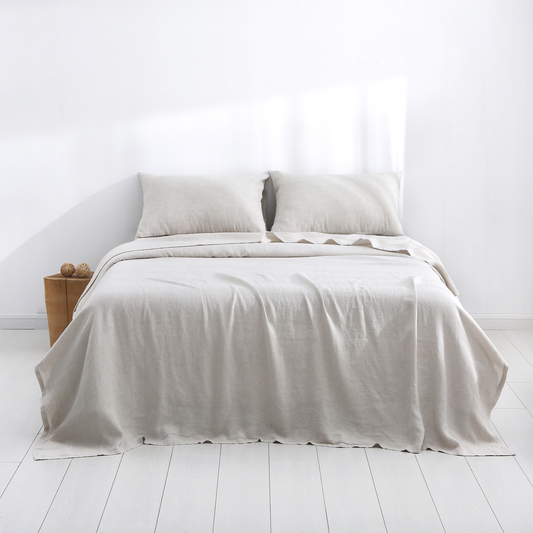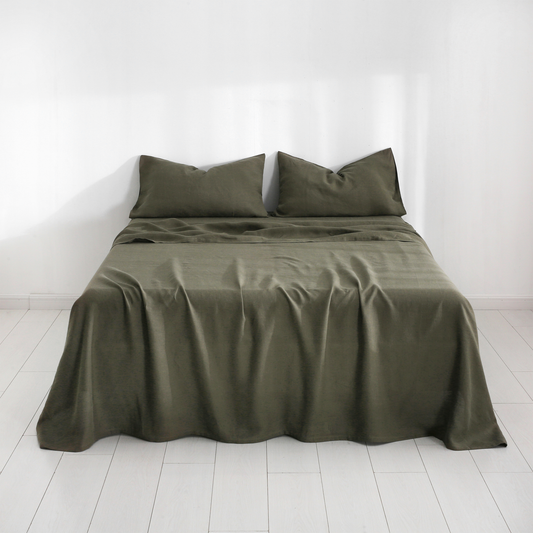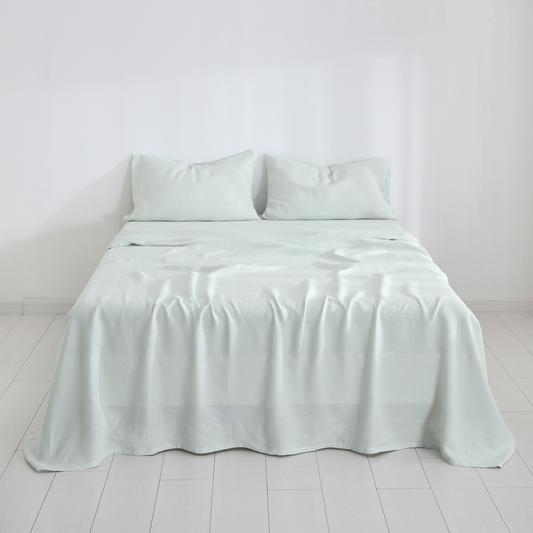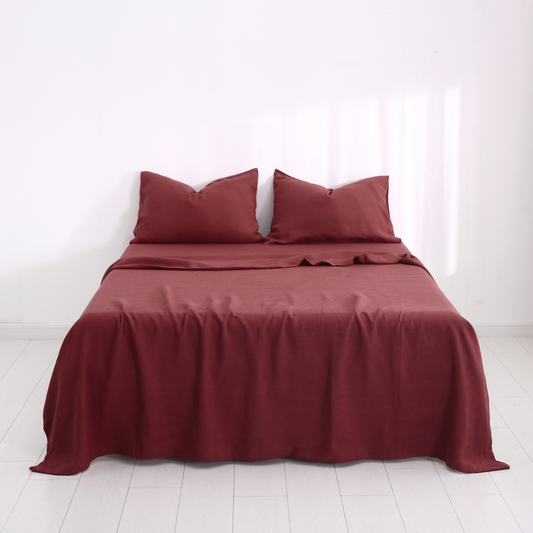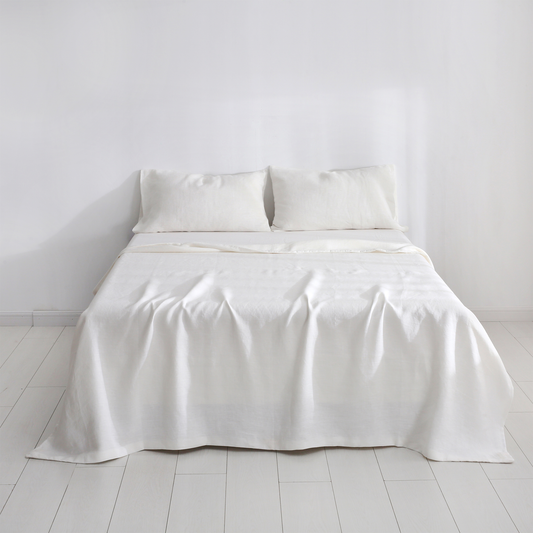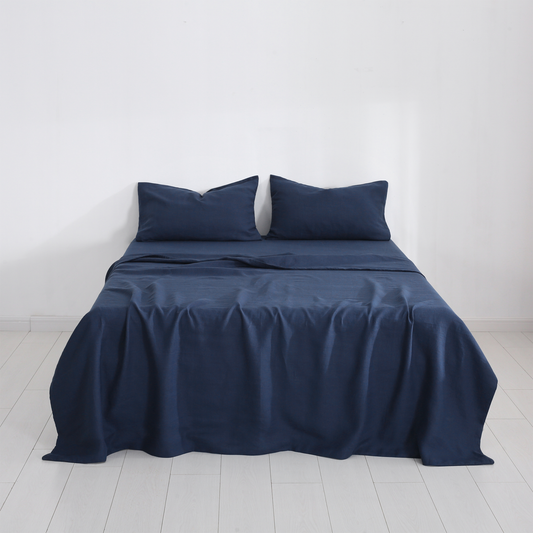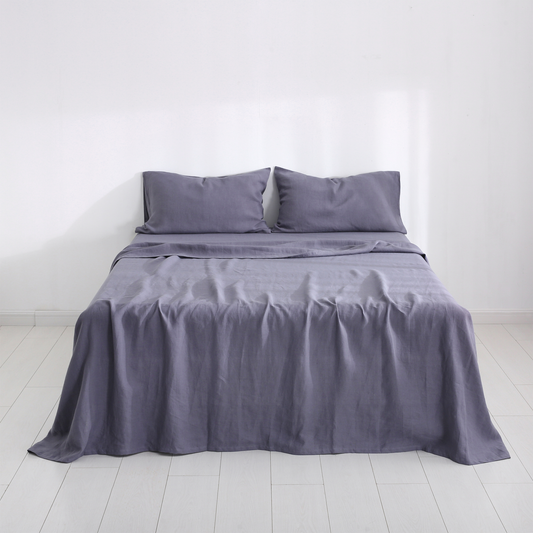Why Jo Dope fights the fight against non natural bed linen.
We have all seen the plastic islands floating in our nightmares. We all see humans waste and use plastic like a fetish. Yet I feel like not enough people truly understand the impact on the body and us as a race long term. I foresee children of men and mass sterilisation if we do not quickly start engineering out this artificial material. I also think bed linen and sheets is one easy solution you can pick up and run within the home. I have researched and broken down why I am so against plastic. Please comment if you have any experiences with it or feel I missed anything.
What are Microplastics?
Microplastics are tiny particles of toxic man-made materials that are less than 5 millimetres in size.
What are primary microplastics?
Primary microplastics are found in various products and materials, including cosmetics, personal care products, cleaning products, clothing, and bed linen.
What are secondary microplastics?
Secondary Microplastics are tiny particles that are released into the environment through degradation.
Why do we hate MicroPlastics?
Microplastics do harm the environment and marine life, as well as pose health risks to humans.
I hate to be alarmist, though we have a generational and for the "ages" problem with plastics entering our waterways, oceans, soil and self.
Do I have microplastics in my home and bed linen?
One primary creator of microplastics in the home and planet is synthetic textiles, such as polyester, nylon, and acrylic, which are released when washed.
These microscopic fibres are created when we wash our textile-based products, enter our waterways, oceans, and drink water. There has yet to be a proven filtration method for these atoms.
Are the waterways on the planet related to our bodily water and fluids ?
Waterways and our bodily water are closely related in that they are both part of the same water cycle and are connected through various means.
The water in our bodies, known as intracellular water, is made up of the water found within our cells. It plays a vital role in maintaining the balance of electrolytes and other essential substances in our bodies.
Waterways, such as rivers and oceans, are part of the larger global water cycle, which includes water movement from the earth's surface to the atmosphere and back.
The water in our bodies ultimately comes from the same sources as the water in our waterways, including precipitation, surface water, and ground water.
When it comes to microplastics, the water in our bodies and waterways are so closely related because the same microplastics in rivers, dams and oceans can also enter our bodies through consumption.
Can current wastewater systems filter microplastics?
Wastewater treatment plants may not effectively filter out microplastics; thus, they can enter natural water systems through treated sewage discharge.
How do Micro Plastics affect my health ?
Microplastics can also enter the human body by consuming seafood that has ingested microplastics and drinking water that contains microplastics.
Filter your Water!
The long-term health effects of exposure to microplastics are still being studied, but research has shown that microplastics can cause physical harm to organisms that ingest them. Studies show that the particles are so small that our body cannot filter them, and the endocrine system is affected.
What is the endocrine system and how does it relate to micro plastics?
We are your bed linen merchants, not doctors or scientists, but our ignorant understanding is the glands that make hormones that rule your body. Don't mess with it!
How do I remove microplastics from my life?
There are a few ways to identify products that may contribute to the creation of microplastics.
One way is to look for products containing microbeads, tiny plastic beads commonly found in personal care products such as toothpaste, exfoliating scrubs, and facial cleansers.
Products containing microbeads should be avoided, as they can easily enter our waterways and oceans when washed down the drain.
Another way to identify products that may contribute to the creation of secondary microplastics, look for products made from synthetic materials such as polyester, nylon, and acrylic.
To minimize the release of microfibers, please purchase, only products that are made from natural fibres such as hemp, cotton, linen or wool, and bamboo. If you have read any of our blogs, you know my feelings towards some of these other natural fibres and the impacts on humans and the planet, in this case, Natural always over Petroleum based materials.
Unscrupulous plug :) Buy hemp bedding :)
Check the labels ! Do a little research on your brands of choice :)
In general, it's important to read product labels carefully, and look for phrases like "microbeads-free" or "microfiber shedding-free", and also to check if the product has certifications from environmental organizations that guarantee the product is friendly to the environment.
Another way to know if the product is not polluting the environment you can research the company's environmental policy and certifications.
I love getting emails about customers requesting no plastic in the shipping :)


